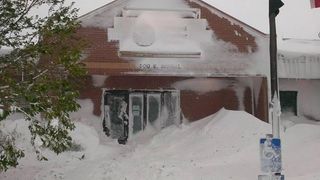
Weather Service Forecasters Hike Through Blizzard to Work

A whopper of a blizzard hit the western Plains at the end of last week, covering the Rapid City, S.D., area in nearly 2 feet of snow. The snowstorm a record for snow falling in one day in October in the city, with 19 inches falling on Friday (Oct. 4), according to the Rapid City National Weather Service office. (That amount was also the third highest for any single day at any time of year.)
The epic snows left large drifts around the city, making streets impassable. But that didn't stop several NWS forecasters who hiked to work across the drifts in the decidedly inclement weather, even though they do not know when they will next be paid because of the government shutdown, the Washington Post's Capital Weather Gang blog wrote. The forecasters were exempted from the furloughs that have sent thousands of government workers home because their work is considered key to protecting life and property.
Another set of forecasters in Anchorage, Alaska, put a secret plea in one of their forecasts, with the first letters in each line of a forecast discussion running together to spell "Please pay us."
The Rapid City forecasters worked tirelessly through the night to stay on top of the storm, taking cat naps and rotating being on the job, meteorologist-in-charge David Carpenter told the Capital Weather Gang.
Follow Andrea Thompson @AndreaTOAP, Pinterest and Google+. Follow us @livescience, Facebook & Google+.
Sign up for the Live Science daily newsletter now
Get the world’s most fascinating discoveries delivered straight to your inbox.

Andrea Thompson is an associate editor at Scientific American, where she covers sustainability, energy and the environment. Prior to that, she was a senior writer covering climate science at Climate Central and a reporter and editor at Live Science, where she primarily covered Earth science and the environment. She holds a graduate degree in science health and environmental reporting from New York University, as well as a bachelor of science and and masters of science in atmospheric chemistry from the Georgia Institute of Technology.
